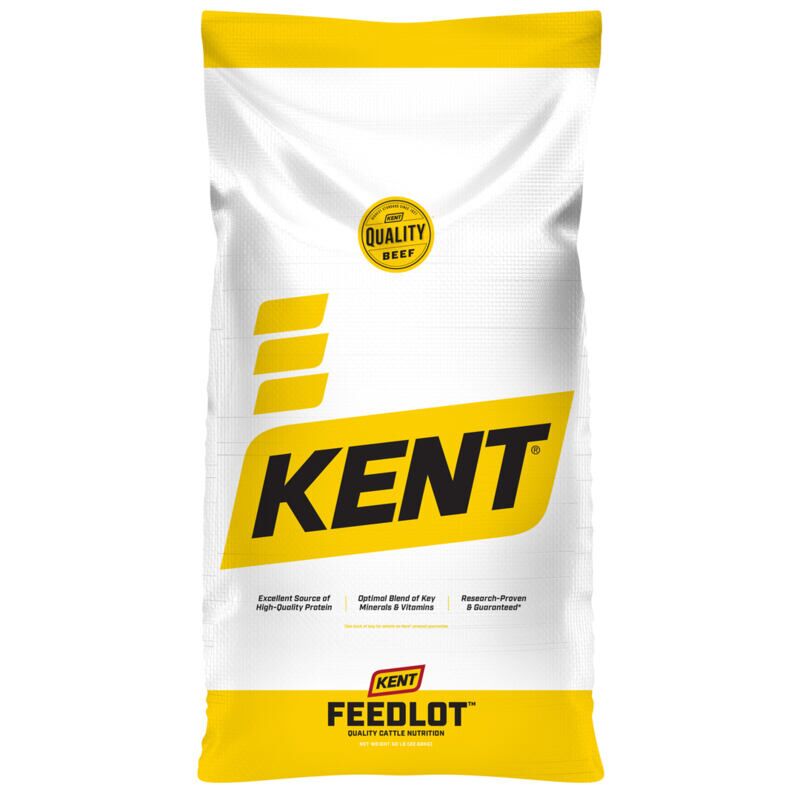Feedlot CIT Grower 125R
| Life Stage: | Grower |
|---|---|
| Feed Type: | Self-Limiting |
| Packaging: | 50-lb Bag |
Feedlot CIT Grower 125R is a protein, vitamin and mineral supplement formulated for using feedlot rations during the grower phase.
- Dry Intake Limiters - Feedlot CIT utilizes dry intake limiters instead of fish oil. This eliminates unpleasant odors and bag bleed through.
- Ration Flexibility - Higher protein content and pelleted form allow for greater flexibility when formulating the TMR.
- Rumensin - The addition of Rumensin helps support feed efficiency in feedlot cattle.
- Non-medicated option - Feedlot CIT Grower is also available without medication.
| Crude Protein, min | 30.00% |
| NPN, max | 17.50% |
| Crude Fat, min | 2.00% |
| Crude Fiber, max | 16.00% |
| Calcium, min | 3.50% |
| Calcium, max | 4.50% |
| Phosphorus, min | 1.00% |
| Salt, min | 1.50% |
| Salt, max | 2.00% |
| Potassium, min | 1.25% |
| Vitamin A, min | 10,000 IU/lb |
| Vitamin D3, min | 1,000 IU/lb |
| Vitamin E, min | 10 IU/lb |
| Active Drug Ingredient | Amount |
|---|---|
| Monensin | 125 g/ton |
Mixing Directions
Mix 350 pounds of Feedlot CIT Grower 125R with 1650 pounds of corn and roughage to make a ton of complete feed. The resulting mixture will contain 21.9 g/ton (10.95 mg/lb) of monensin. Feed resulting mixture as the sole ration to cattle at a rate to provide 50-480 mg of monesin per head per day.
Warning
A withdrawal period has not been established for this product in pre-ruminating calves. Do not use in calves to be processed for veal.
Caution
Do not allow horses or other equines access to feed containing monensin. Ingestion of monensin by equines has been fatal. Monensin medicated cattle and goat feeds are safe for use in cattle and goats only. Consumption by unapproved species may result in toxic reactions. Feeding undiluted or mixing errors resulting in high concentrations of monensin has been fatal to cattle and could be fatal to goats. Must be thoroughly mixed in feeds before use. Do not feed undiluted. Do not exceed the levels of monensin recommended in the feeding directions, as reduced average daily gains may result. If feed refusals containing monensin are fed to other groups of cattle, the concentration of monensin in the refusals and amount of refusals fed should be taken into consideration to prevent monensin overdosing.
Related Resources
Preventing Mycotoxins in Cattle: Minimize Mold Growth in Feed and Grain
Pre-harvest recommendations for limiting mycotoxins in feed and grain Clean inside and outside of grain bins and dryers. Prior to storage, check the condition of the bin for possible water leaks, and …
Read MoreSetting Beef Cows Up to Produce the Best Colostrum for Calves
For decades, the beef industry has stressed the importance of ensuring calves receive colostrum in a timely manner, but the emphasis stops there. What about colostrum quality? How do we make sure the …
Read MoreBenefits of Bovine Plasma in Calf Milk Replacers
What are the benefits of animal plasma? The benefits of plasma in calf milk replacers can be observed in stressed (calves facing a greater pathogen load) and non-stressed calves. Benefits include incr …
Read More